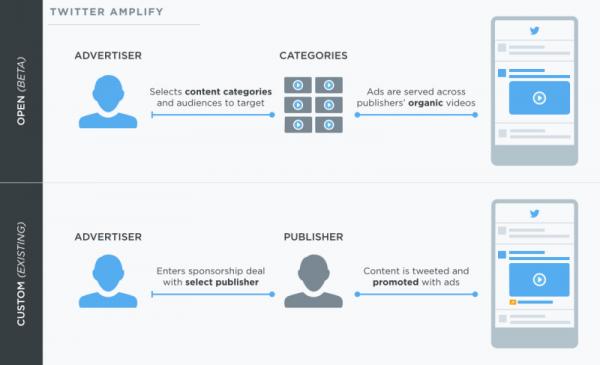With Facebook and YouTube video services taking off with millions of daily views and a number of brands on board as partners, it’s no surprise that Twitter wants to get in on the action.
The company has announced that it will expand its Amplify services in an attempt to help creators monetize their work through videos posted to the site, according to this report from VentureBeat. Kicking off today, the program will allow video ads to run inside preferred content categories. It’s currently in beta, but could expand over the next few weeks to more advertisers and publishers.

As highlighted by the image above, publishers will now have the option of uploading their premium quality videos directly to the site, selecting a few content categories where they wish their pre-roll ads to run. From there, Twitter’s Amplify service will then put together the ads with the right programmers, so that no additional deals need to be arranged with the company.
With this ad system, publishers will be able to make money a bit easier through the streamlined advertising process, even with or without sponsored deals. A few estimates indicate that the revenue split would be along the lines of 70/30, with more money going to the publishers — that’s a higher average than most video sites offer these days.
This “direct upload” process could be a lot simpler for companies to advertise their wares, as they don’t have to go through big-name partners (like WWE, Fox and Dick Clark Productions) to get their video message out.
This ties in with Twitter’s launch of Auto Amplify, a program that allows brands and publishers to create campaigns together. With it, it’s drawn in a number of high-profile brands already, including the National Football League, the BBC and Neutrogena, amongst many others.
Will this be effective for Twitter in the long run While the audience may not be as large as Facebook Video and YouTube — at least, not yet — the simplification of setting up ads without needing to sign any major partnerships with either companies or publishers could be just the step some companies need to move forward. We’ll see just how effective it is as the program moves on in the next few months. Amplification, indeed.

